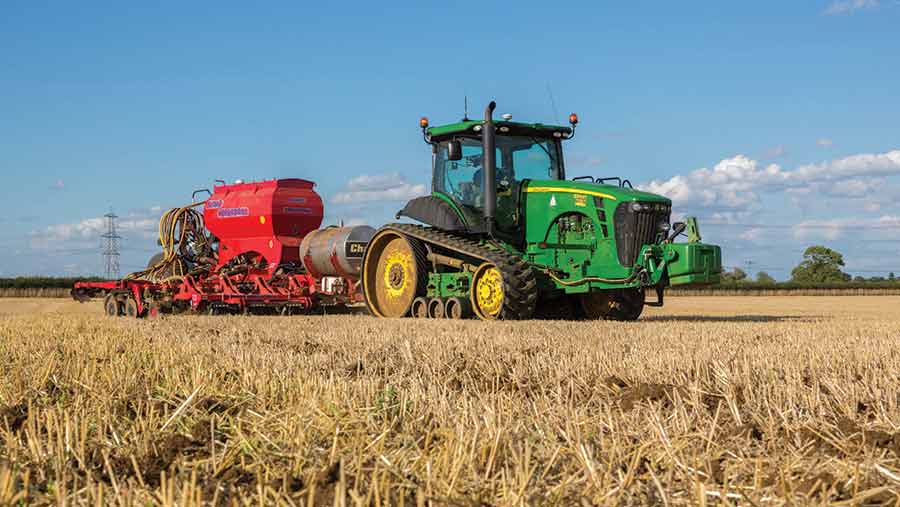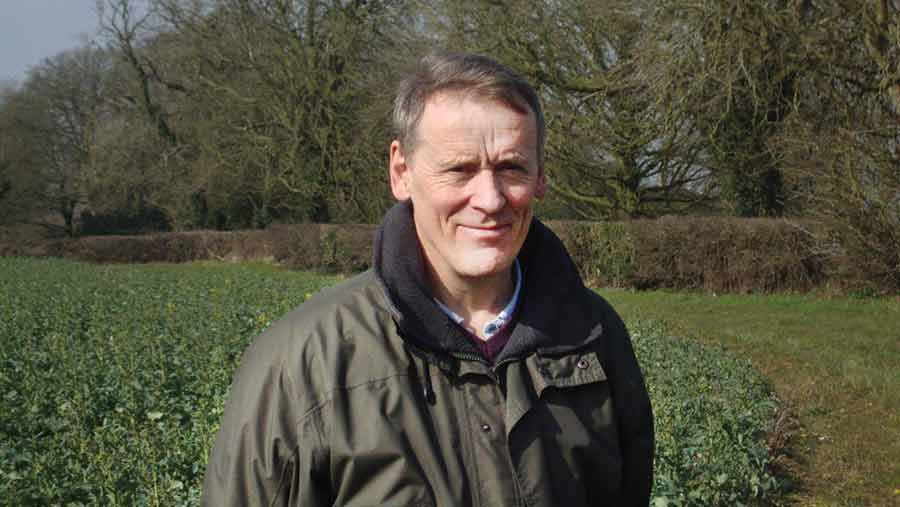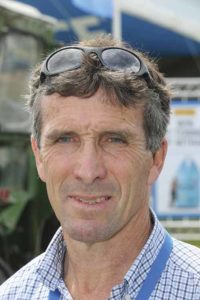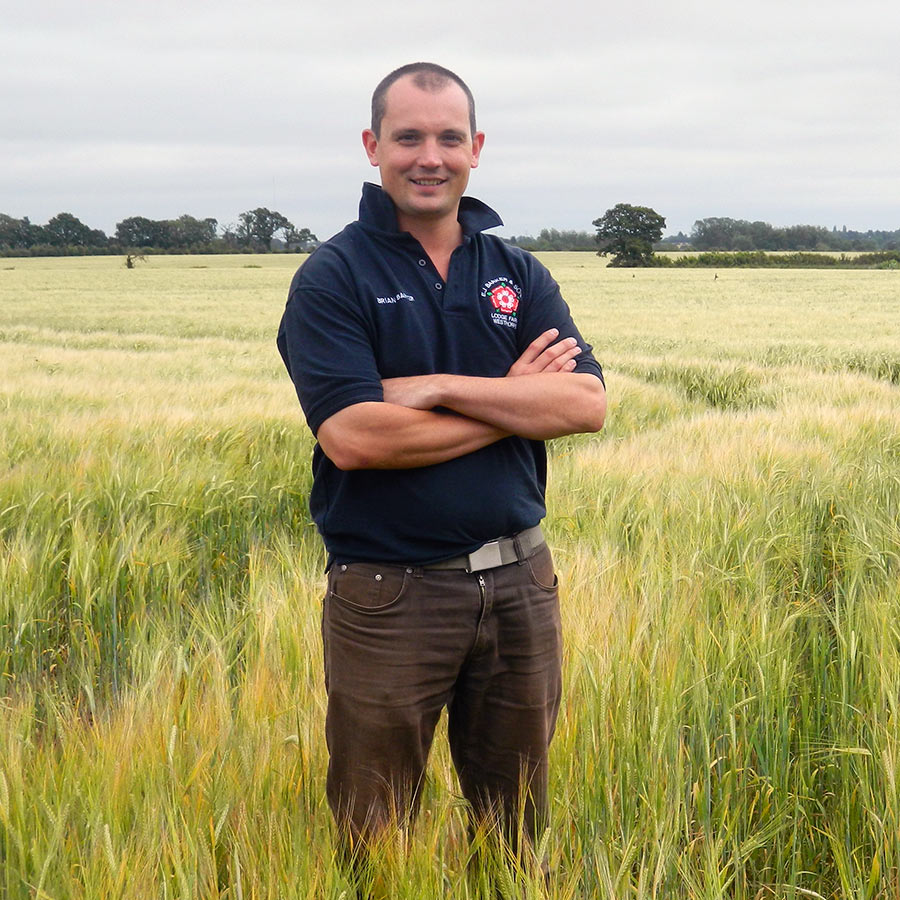Which establishment system is best? 5 growers share their stories
 © Tim Scrivener
© Tim Scrivener The hottest topic in recent months is which crop establishment system to opt for, as growers look for low-cost options to survive low commodity prices, without compromising crop performance.
There is a bewildering range of cultivation systems ranging from subsoiler seeders and scratch and till through to strip-till drills and the Cross Slot direct drill.
But for many, the question is fairly simple – can crop establishment be both low risk and low cost, or is there a price to pay for reducing the number of passes?
See also: 12 no-till drills on show at farmer-organised demo day
Harry Henderson, AHDB regional manager for the East Midlands, points out that in the current economic climate, the debate at Monitor Farmer meetings across the UK has mainly been about whether there are cheaper methods of successfully establishing crops – rather than if there is a right or wrong way.
“That is understandable, as every farm presents a slightly different set of circumstances,” he says.
“From the meetings, it has become very clear that there isn’t a one-size-fits-all solution.”
Where a change of approach is being considered, it is accompanied by a desire to know how long it will take before soils adapt and any benefits are seen, he says.
“The other burning query that has been asked throughout the year about all the changes to establishment systems that we have seen on the Monitor Farms are whether it has been possible to maintain yields and control pests and grassweeds, or if there has been a compromise.”
Soil structure and drainage, fertiliser placement and the role of cover crops have also been under scrutiny with the various different approaches, as well as the suitability of different bits of kit for working in very wet conditions, reveals Mr Henderson.
Soil health
“In addition, there is a growing interest in soil health and how to improve organic matter content,” he says. “Some of this comes with a very steep learning curve, which is where the Monitor Farm programme can help.”
He urges growers to make the most of their local meetings and share their ideas with other like-minded farmers.
“We get an open and honest exchange of information and advice, with no commercial bias. They are the ideal place to discuss the various options.”
Simon Brock, Swanton Morley Farms
On the new Norfolk Monitor Farm, manager Simon Brock has been using a range of establishment techniques for different crops at Swanton Morley Farms for good reasons.
As well as overseeing 675ha for the Keith family, Mr Brock also looks after Swanton Morley Contracting, which does all the day-to-day work on three local contract farms. This brings the total arable cropped area to 965ha.

Simon Brock
The contract farms are mostly in a three-year rotation of winter wheat, barley and oilseed rape, he reveals.
“As the emphasis is on margin, these farms all have a more traditional rotation. They also all have blackgrass.”
OSR establishment
As a result, oilseed rape is established using a flat lift, the following wheat is established with minimum tillage using separate cultivator and drill passes, while the land is ploughed before it goes into barley.
“Like most arable farms with blackgrass to contend with, our cultivations and cropping plans have to play a role in keeping it at manageable levels,” he says.
“For this to work, they have to be used in the right way,” he says.
“Going too deep with minimum tillage, for example, can just make the problem worse.”
On the home farm, there are two rotations – one for the farm’s light land and the other for the heavier soils.
For the very light, sandy soils, the rotation consists of sugar beet followed by two spring barleys, with the very forgiving land allowing a simple plough-and-plant approach, he says.
Heavier land
The heavier land, which has a more diverse seven-year rotation, brings a different set challenges at drilling. Poor drainage and waterlogging can be an issue, so timeliness of operations is essential.
“On that area of the farm, we used to have a target of getting everything done by the end of September,” says Mr Brock.
“But then Atlantis [iodosulfuron + mesosulfuron] stopped working, and we had to rethink our approach to include the use of stale seed-beds and later drilling.”
He is very pleased with oilseed rape establishment, having found a simple system that gives him the 4t/ha+ crops that he aims for.
A Cousins flatlift, with nine legs at 0.5m spacings, has revolutionised drilling and virtually eliminated soil disturbance.
“It works really well. We can go straight in, with no other cultivations needed first, as we get a good tilth behind the legs.
“Within 24 hours, we roll the field and the job is done. We can cover 20ha/day and the new crop gets away very quickly, with the hybrids developing into thick, bushy plants on such wide rows. It’s been a huge success.”
This very-low-disturbance approach also means the propyzamide works very well and oilseed rape does perform a cleaning crop role, he adds.
“We start drilling in early August at recommended seed rates, having baled the straw off first to reduce slug pressure.”
Minimum tillage is used to establish the following winter wheat so old, buried blackgrass seeds aren’t disturbed and early weed flushes can be sprayed off before drilling.
Ploughing
In contrast, ploughing is used ahead of barley, as it allows any blackgrass seeds shed in the wheat crop to be buried, he says.
“We are using rotational ploughing to help with our blackgrass management. It also gets rid of trash and slugs.”
The downside is that it is slow and more costly, he acknowledges.
“However, providing it doesn’t rain after ploughing, leaving us with eight inches of waterlogged soil, it does spread a bit of risk – there are farms in this area that still plough every year, and they don’t have blackgrass.”
Mr Brock also has one field that hasn’t been cultivated for five years, so that he can assess direct drilling.
“We have tried it leaving chopped straw on the surface and with removing the straw, but we have had terrible problems with slugs. At this stage, I’m keeping an open mind,” he says.
Julian Gold, Hendred Farm Partnership
On AHDB’s Wantage Monitor Farm, manager Julian Gold is using scratch tillage with tines in a controlled traffic farming (CTF) system, which he describes as a soil-friendly, low-cost approach to establishment.
His system is based on the three-in-one CTF principle using 30m tramline widths and 10m field operations, which allows him to leave areas of soil untouched.

Julian Gold © Tim Scrivener
As a result, he has almost eliminated compaction across the 800ha he oversees, with just 20% of the soil surface being trafficked.
Mr Gold views CTF as the right platform for scratch tillage.
“It means we are working in a compaction-free environment with good soil structure, so we can go with only tines and use ultra-shallow tillage. As a result, it has reduced our fuel use and improved our work rates.”
He stresses that very shallow tillage only works if there isn’t any soil compaction, with the use of tines allowing him to get as close as possible to direct drilling and prevent any disturbance of soil biology.
“Discs move 100% of the soil surface and create greater disturbance. If it’s wet, you tend to get the top two inches forming a pudding and it can build a compacted layer. That’s something we are trying to avoid wherever possible.”
The tine cultivation is done into the standing stubble of the previous crop, behind the combine, to reduce any risk of overworking the soil or adversely affecting soil health, he adds.
“We find it works in every situation, whether it’s wet or dry. It’s as near as it can be to direct drilling, but we also get the benefits of a tine cultivation.”
All of the cultivations carried out on the Hendred Farm Partnership are done with both soil and crop interactions in mind, he says.
“Soil health is important as we don’t want to disturb soil biology with deep inversion or reduce soil organic matter content. Prevention is always better than cure when it comes to soil structure and compaction.”
Good seed-beds
However, they also have to provide good conditions for the seed, so that crops get away to the best possible start and the business can reduce its use of agrochemicals.
“We are using stale seed-beds, followed by glyphosate once they have greened up, to help with grassweed control,” he says.
“Removing as much of the blackgrass population as we can before we drill is essential, as the herbicides just aren’t working as well as they were.”
Despite farming well-drained silty clay loams over chalk, grassweeds remain a challenge, he acknowledges.
“They’re not following the theory that they only thrive on poorly drained, very wet soils.
“So as well as using scratch tillage to chit the blackgrass, we have to be more flexible with our rotations to try to outsmart the weed and keep it guessing.
“In the past, we were as guilty as anyone of growing blocks of crops in a fixed rotation, even though we had a six-year rotation with two spring breaks in it. Now we have to be flexible and use a more random cropping plan.”
Straw chopping
All of the straw is chopped and returned as trash for incorporation into the top two inches of soil, making slug control important, says Mr Gold.
“This is where scratch tillage also has a role, as it kills slugs,” he reports. “One pass costs us £15-£20/ha – nearly the same price as one metaldehyde treatment.”
He mixes slug pellets with the rapeseed, which is direct drilled after chopped straw. In wheat, he has a low level of pellet use, with just one pass of 4kg/ha of metaldehyde needed in most seasons.
He admits to having to use deeper cultivations occasionally, but won’t loosen wheelways and headlands just ahead of the oilseed rape crop so that the herbicides can work.
“To get the best weed control results out of propyzamide, we have to keep weed seeds in the top layer,” he explains.
“So we do have to manage how we use our establishment system.”
Mr Gold dismisses the theory that CTF requires heavy investment. “There is no need to have expensive steering equipment on all the machines and there are good savings in time and fuel.”
|
Costs of the two establishment systems |
|||||
|
Old system |
CTF system |
||||
|
|
Hours/ha |
Fuel use (litre/ha) |
Hours/ha |
Fuel use (litre/ha) |
|
|
V-Form |
0.36 |
15 |
Subsoil lanes |
0.22 |
5 |
|
Triple press |
0.25 |
9.38 |
10m cultivation |
0.15 |
6.8 |
|
Cambridge roll |
0.17 |
2 |
Cambridge roll |
0.17 |
2 |
|
6m drill |
0.26 |
9.74 |
10m drill |
0.17 |
7.48 |
|
Cambridge roll |
0.17 |
2 |
Cambridge roll |
0.17 |
2 |
|
Total |
1.21 |
38.12 |
|
0.86 |
23.28 |
|
Fuel use savings of 14.84 litres/ha at 70p/litre = £10.39/ha – about £8,312 over 800ha. Time/labour saving of 33 hours/ha – about 264 hours over 800ha |
|||||
Tom Bradshaw, Fletchers Farm
For Essex grower Tom Bradshaw, any establishment system that is put into use at Fletchers Farm, near Colchester, has to perform a double role.
“In this tough economic climate, it has to help reduce our costs,” he says. “However, it must also allow us to improve our soil management.”

Tom Bradshaw © Tim Scrivener
While the need to be competitive and produce grain at world market prices has led him to focus on driving down the business’ fixed costs, rather than the variable costs, he is also very aware the soil is his biggest asset.
“Soil health is a priority,” stresses the AHDB Monitor Farmer.
“It’s something that was overlooked when everyone was chasing yields and grain prices were good. But now we all need to make sure we are operating in a sustainable way and not doing anything we are embarrassed about.”
Avoid soil structure damage
That means making sure soil structure isn’t damaged unnecessarily through overcultivating and that steps are being taken to improve soil organic matter content to improve drainage and recycle nutrients effectively.
The trend for larger, heavier machinery on UK farms hasn’t helped with soil condition, he points out. “As farms got bigger, axle weights increased. With that, soil compaction problems went up too.”
His other consideration with establishment systems is blackgrass control, which has become a real challenge on his heavy soils.
“Every time you move the soil, it seems to make any grassweed problem worse. So after a stale seed-bed has been created, it is important that no more weed seeds can germinate with the crop.”
For all of these reasons, Mr Bradshaw has switched to ultra-low-disturbance drilling, or opportunistic direct drilling.
To do this, he has purchased a Cross Slot drill and is using cover crops ahead of spring drilling to get soil structure and nutrient capture benefits, as well as to improve soil organic matter.
While he admits cover crops are still on trial, he highlights the fact they make use of the sun – a free energy source – to keep growing and stop leaching and soil erosion.
“Where spring crops are coming into rotations, it makes sense to have cover crops. Of course, we are all still learning about the best mixes for different situations and how to grow them, as well as how to destroy them.”
Cross Slot drill delivers
Mr Bradshaw acknowledges that his Cross Slot drill might be considered expensive, but he points out that he has seen his establishment costs fall by £65/ha since making the change.
“The drill is built to last,” he points out. “We expect to get 20 seasons out of it. The other positive change is that we have been able to reduce our machinery weights and horsepower requirement.”
He maintains some flexibility and will still use cultivations where they are needed – treating a field according to requirements. As a result, a shallow cultivation may be used in the autumn to create a bit of tilth.
“We also still have a plough,” he admits. “But it is very difficult to plough heavy land well.”
While it’s still early days for the new system, Mr Bradshaw is pleased with the way crops have looked this year and has already seen a difference in water infiltration and soil drainage.
“Our crops didn’t sit wet all winter,” he says. “It will take time to see the full range of benefits and we are on a steep learning curve.”
However, slugs are a challenge, he accepts. “They are the biggest threat to the system. It is possible to place slug pellets with the seed, which is what we do after oilseed rape. We also keep some flexibility in our rotation to react to any agronomic problems.”
Brian Barker, Suffolk
In Suffolk, Brian Barker has reduced his wheat establishment costs by more than £130/ha.
The purchase of two new Sumo drills has allowed him to make use of both direct drilling and strip tillage, with different techniques being employed on spring and winter crops, as well as according to soil conditions.

Brian Barker
While spring crops and cover crops are direct drilled, his winter wheat is established by strip tillage – although with two drills he has the option to switch to direct drilling if the conditions are right.
His previous establishment system, based on a Vaderstad drill, gave a crop average of £235/ha in fixed costs. Last autumn, with the new smaller drill system up and running, that figure fell to £104/ha.
However, the savings don’t end there, says Mr Barker. “We are also spending less on wearing metal and our fuel use has gone down by 17,000 litres. Tractor hours have fallen too.”
He estimates he can direct drill winter wheat for £45/ha, making the system very attractive in the current climate.
“It has been a steep learning curve, especially given the wet conditions we have encountered ever since the drills arrived on the farm, but we have made good progress,” he says.
Jo Franklin, Hertfordshire
In Hertfordshire, Jo Franklin takes a very different view. While she is all for reducing costs, the risks of a crop failure are too great for her to contemplate taking any shortcuts with establishment methods.
“We can’t afford to lose a crop. That’s a far riskier situation for us than a few agronomic challenges.”
In addition, a heavy blackgrass burden means ploughing is back on the agenda, as it will allow her to bury blackgrass seed and start to make inroads into the high weed numbers on a recently adopted farm.
“On that farm, we will be ploughing more,” she says. “As well as the blackgrass control benefit, it helps with drainage and fits in well with our spring cropping plans.”
Instead, she prefers to use her agronomist training to chip away at variable costs, where she can make savings without compromising performance.
“I have cut back on my fungicide spend this year, with most wheats getting a two-spray programme at a total cost of £60-£70/ha,” she reveals.
In addition, none of the oilseed rape received any pre-emergence herbicides.”
Home-saved seed also helps to keep costs down, and there is no place for costly starter fertilisers, she confirms.

